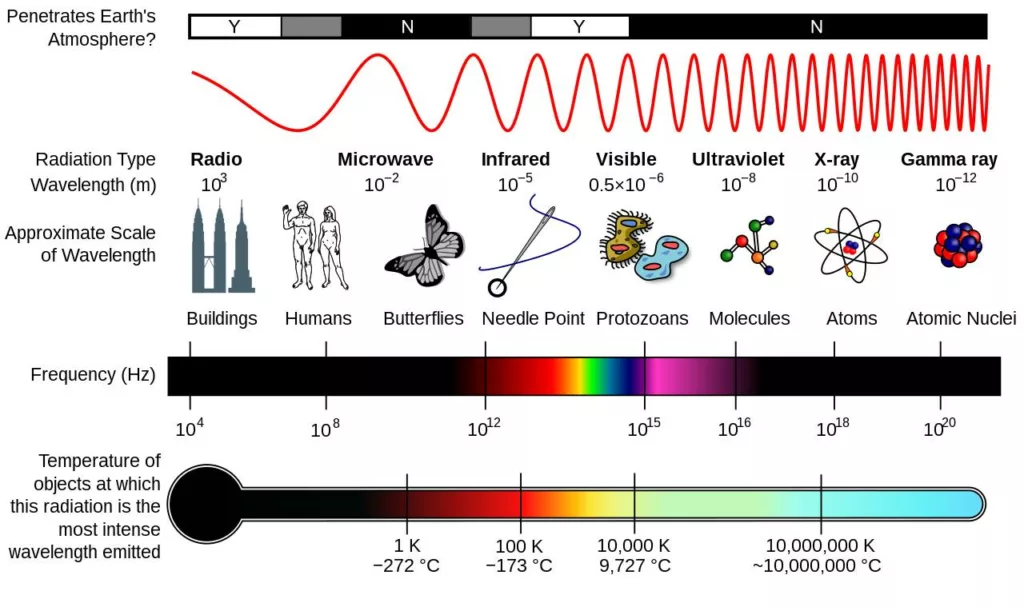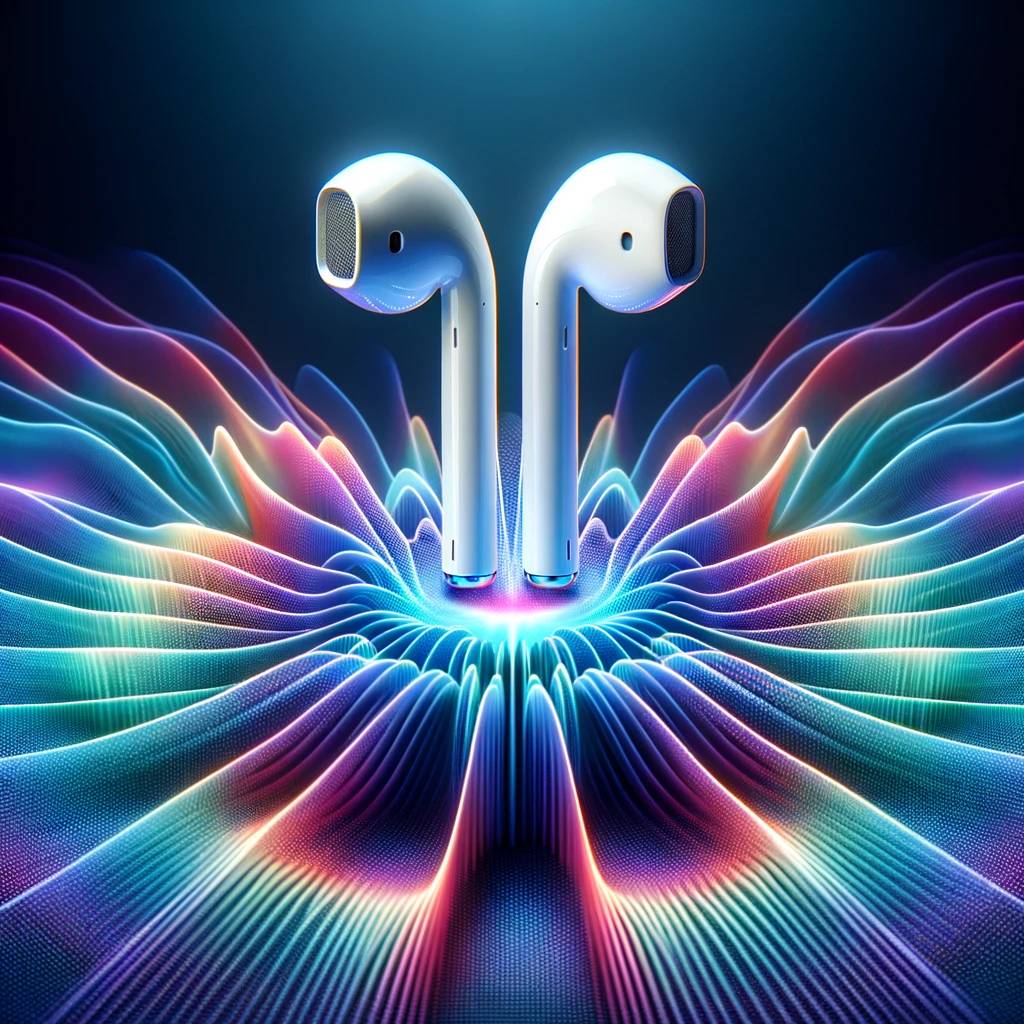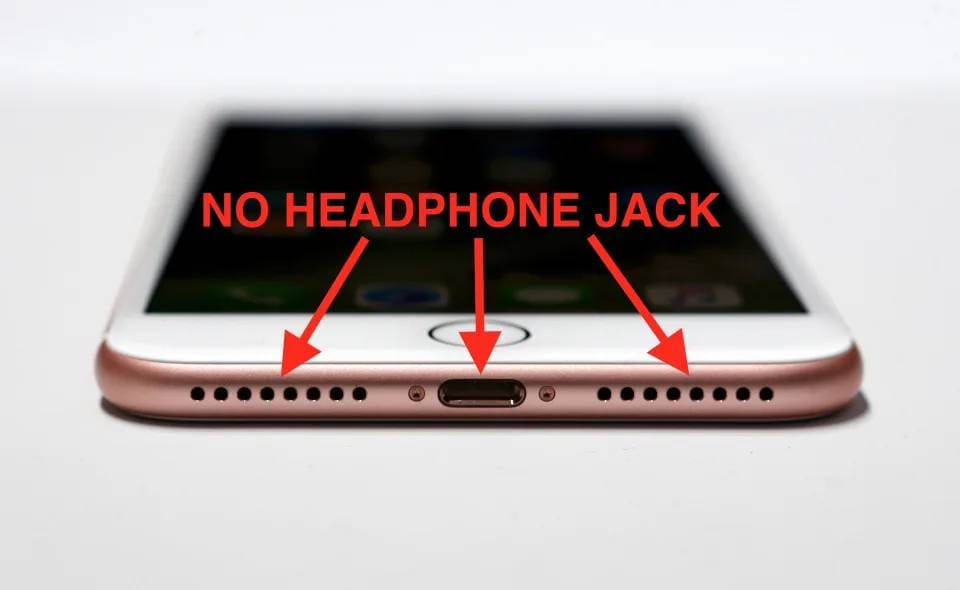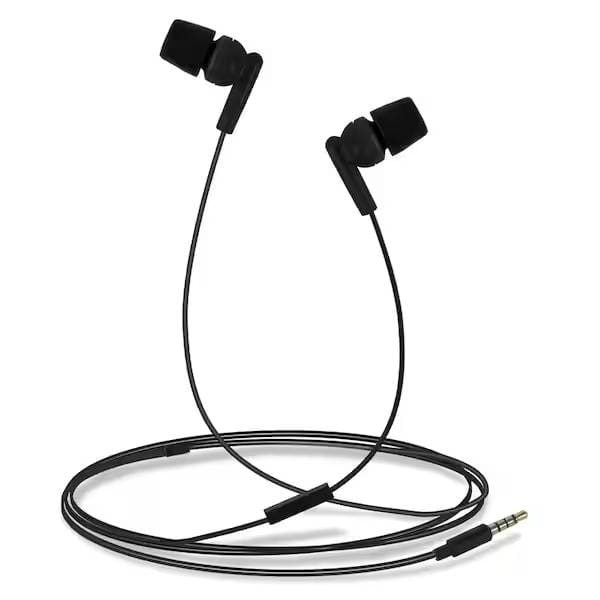Are AirPods bad for you?
Wireless headsets, including the increasingly popular AirPods, have transformed the way we listen to music, make calls, and interact with our devices. With this shift, many phone makers are saying goodbye to old-school headphone jacks, nudging us all towards a cord-free life.
Today, AirPods aren’t just about ditching wires; they’ve become a sign of how we live today, mixing tech with trend. Yet, as AirPods pop up everywhere, there’s a growing buzz about their safety.
You see, AirPods emit radiation"Radiation" in the context of Electromagnetic Fields (EMF) refers to the process by which energy is emitted and transmitted through space or a material medium in the form of electromagnetic... to connect with your devices. And given how close they sit to our brains, it’s only fair to wonder what kind of effects they have on our health. So, when it comes down to it, are AirPods bad for you?
Are AirPods Bad For You?
Apple’s AirPods have changed the game, making it super easy to listen to music or chat with friends without getting tangled in wires.
But there’s a flip side to this convenience. Just like our cell phones, AirPods use BluetoothFrom the perspective of someone concerned about the health effects of electromagnetic radiation, understanding Bluetooth radiation is crucial, especially in our increasingly wireless world. Bluetooth technology, ubiquitous in our daily... technology, which means they emit a kind of radiation known as EMF right into our ears and close to our brains.

Want to Slash Your EMF Health Risks?
Want to Slash Your EMF Health Risks?
Good! Learn the one small change you should make right now.
This radiation is similar to what the World Health Organization lists as a Class 2B carcinogen and governments like the state of California warn you to keep away from your head.
AirPods Emit More Radiation Than Others
Compared to a typical cell phone, the amount of radiation emitted by Bluetooth headphones can be significantly less.
That said, not all Bluetooth devices are created equal. There are actually three different types of Bluetooth transmitters, each with its own level of power output.
- Class 1 transmitters — transmit with a power"Power" in a scientific context refers to the rate at which work is done or energy is transferred. In simpler terms, it's how fast something is using energy. For example,... of 100 mW (milliwatts)
- Class 2 transmitters — transmit with a power of 2.5 mW
- Class 3 transmitters — transmit with a power of 1 mW
As you can see, class 3 transmitters output the lowest level of EMF power emissions and offer the lowest range of device connectivity (up to about 3 feet).
Class 1 outputs the highest amount of power and offers the maximum range of connectivity (300 feet). Class 2 sits in the middle.
Apple’s second generation of AirPods uses Class 1 Bluetooth transmitters – meaning they give you a better range of connectivity at the cost of outputting more power (which in turn equals higher radiation exposure).
So, in a nutshell, among Bluetooth headphones, Apple’s AirPods emit the highest EMF radiation with the highest level of power.
Fact: One report found that hands-free kits channel three times the dose of radiation into the skull compared to a cell phone!
It’s Not Just the Power
The main concern with wireless earbuds isn’t only the strength of the radiation they emit.
There are two other significant factors:
- the placement of the device on the body, and
- the cumulative exposure over time
Let’s look at each of these things.
Dangers Of AirPods: Are AirPods Bad For Your Brain?
Holding a cell phone to your ear is dangerous. There’s no longer any debate about this: public health bodies globally strongly advise against it.
That being the case, what about putting a radiation-emitting device inside your ear where it’s even closer to your brain?
Wireless earbuds like AirPods deliver EMF radiation straight inside your head via your ear canal. That’s not only very close to your brain but also to a part of your head without the skull to provide even some basic level of shielding against EMF.
The radiation has a straight shot to your brain.
So even with emission levels lower than that of a cell phone, there’s the factor of higher absorption.
Says Jerry Phillips, a professor of biochemistry at the University of Colorado at Colorado Springs, “My concern for AirPods is that their placement in the ear canal exposes tissues in the head to relatively high levels of radio-frequency radiation.” Many other scientists agree.
AirPods & Brain Cancer
Given what we know about the links between EMF and cancer – and the fact that Bluetooth headphones bypass our skull’s natural EMF shielding – we can’t help but wonder whether devices like AirPods could induce chronic diseases like brain cancer.
But I’m afraid the answer isn’t so simple.
See, cancer is a progressive disease. This means, in many cases, it can take a long time for it to develop and get to the point where it becomes fatal.
So, there’s no real way to confirm this through experiments, as that would mean keeping the subjects under observation for as long as it takes for cancer to develop. And that could be years.
But this also doesn’t mean we can rule out the possibility of developing brain cancers from prolonged exposure to EMF from Bluetooth headphones like AirPods. Why?
To understand this better, we have to go back to what we already know.
Research studies show that prolonged EMF exposure causes problems in your brain like:
- Albumin leakage through the blood-brain barrier
- Nerve cell damage
- Myelin sheath damage
- And neurological cognitive disorders
And if they continue, some of these can cause one to develop brain tumors and eventually cancer.
Learn more about EMF’s effects on the brain in my post, “EMF & Brain Health.”
So, do AirPods cause brain cancer? We don’t know yet. But can using them create problems that could cause one to develop brain cancer in the long term?
Certainly, that’s a possibility.
Cumulative Exposure to EMF
The second concern with AirPods is the cumulative EMF exposure.
The World Health Organization has already classified EMF radiation as a Class 2B carcinogen. So, if EMF can lead to cancer, then all exposure counts.
All exposure is damaging. And all exposure – regardless of where the device sits on the electromagnetic spectrum – is best limited.

Wireless earbuds like AirPods take the opposite approach. AirPods are designed to be used for extended periods. The intention is for you to use them while listening to music or podcasts, watching movies, or binging on Netflix series, as well as talking on the phone.
And this is exactly what most people use them for.
We’ve all seen people – friends, relatives, colleagues – walk around all day long with these EMF transmitters lodged in their skulls.
What’s more: your radiation exposure from Bluetooth devices is in addition to your exposure to EMF radiation from your cell phone and other sources of EMF.
So it doesn’t matter that the Bluetooth radiation is weaker than the radiation from your phone because it’s not replacing your phone’s radiation. It’s yet one more source of EMF to which you are exposing your body.
Added to that, when your cell phone is connected to your AirPods, your phone (which is almost certainly very close to you, if not in your pocket) emits more radiation than it otherwise would.
So using AirPods not only adds a new source of radiation right next to your brain, it actually increases the amount of radiation your phone emits.
Apple & Other Cell Phone Companies Try to Force Bluetooth
You may know that back in 2016, Apple caused major ripples with one simple announcement: the iPhone 7 would be released without a 3.5mm headphone jack.
It may not seem like the most dramatic move, but this one design alteration had big implications. It signaled an end to the days of using wired headphones with our phones.
In their stead, Apple released AirPods – their proprietary wireless earbuds.
The move thus ushered in the age of Bluetooth headphones and wireless charging – bringing us one step closer to the portless iPhone and amplifying our collective EMF radiation exposure to yet another level.
It makes sense that people would be wondering about the safety of AirPods. After all, it seemed like almost overnight that they appeared everywhere.
And due to a lack of research, there’s no way for their creator, Apple, to provide a simple answer on whether they’re safe.
And AirPods are not alone. While Apple’s gorgeous little Bluetooth earbuds are incredibly popular, wireless headphones and headsets have been around for a while.
But the popularity of AirPods means they warrant their own investigation. Apple’s move created something of a phenomenon: within a year of the iPhone 7’s release, AirPods were selling out as fast as stores could get them into stock.
And, by removing the headphone jack and effectively forcing iPhone users to go wireless, Apple set a precedent for other companies to do the same – and opened up new questions about EMF and cancer.
AirPod Radiation Level
So far we’ve discussed that Apple’s AirPods emit radiation and use class 1 Bluetooth, the strongest there is. But we haven’t yet discussed exactly how much EMF they expose you to.
So, let’s do that.
Now, unlike phones, which are bigger, we can’t just place an EMF meter on top of AirPods and measure the amount of EMF they’re emitting.
That means we have to rely on the SAR levels that manufacturers publish to understand the levels of EMF we’re receiving from them.
So, what is SAR?
Specific Absorption Rate
SAR, or specific absorption rate, is a method of EMF measurement that shows how much radiation your body will absorb from a specific device.
Manufacturers are legally required to test the SAR levels of their devices and make their findings publicly available in order to sell their gadgets.
But there’s a problem with SAR. It actually doesn’t actually tell you how much radiation YOUR body will absorb from the device. Instead, it tells how much EMF a 6’2” man who weighs 220 lbs would absorb.
I’ve written all about it in my post, “What is SAR and How is Cell Phone Radiation (Not) Regulated?“ So, give it a read.
Even though SAR isn’t perfect, it’s unfortunately all we have. So, let’s have a look at the SAR levels from different generation AirPods.
| Device | Left Ear | Right Ear |
| First Generation AirPods | 0.510 w/kg of Body Weight | 0.466 w/kg of Body Weight |
| Second Generation AirPods | 0.501 w/kg of Body Weight | 0.581 w/kg of Body Weight |
| Third Generation AirPods | 0.614 w/kg of Body Weight | 0.626 w/kg of Body Weight |
“For some Bluetooth devices like Apple’s AirPods, the Specific Absorption Rate (SAR), a measure of the body’s maximum exposure to microwave radiation, exceeds that of many smartphones,” writes Joel M. Moskowitz, Ph.D.
The Ultimate Solution: Avoid Bluetooth
Now that you know the problem with Apple AirPods, the answer to the question, “Are AirPods bad for you?” is clear.
Is there a solution to this problem?
Sure there is. And the ultimate solution to this problem is not just to avoid AirPods, but to avoid Bluetooth altogether.
But what if you have already purchased a pair of AirPods?
Look, I’m not going to ask you to throw them away. Instead, I’ll simply ask you to limit your use to when you really need it – like perhaps when you’re working out or going for a run. Just don’t leave the earbuds in for extended amounts of time.
If you don’t have AirPods or you’re able to move to other solutions, here are some alternatives you can consider.
Use Wired Headsets
The other option is to use a wired headset, like the headset that likely came with your phone. In fact, this is what the US Centers for Disease Control and Prevention (CDC) recommends.
These plug directly into your phone and carry the soundwave signals from your phone up to your earbuds, where they are converted to sound.
By using a headset, you keep the major source of EMF emissions — your phone — further away from your body, thus reducing your exposure.
See, traditional wired headphones are much safer than Bluetooth headphones as wired headsets don’t require wireless transmission (and thus, EMF emissions) as Bluetooth does.
But they’re not the perfect solution they seem to be. And they’re not without dangers.
Why? Because standard wired headsets and headphones use metallic wire to transmit the sound signal to the speakers in your earbuds.
Unfortunately, the same properties that make metal a good conductor for your sound signal also make these same metal wires a good conductorThe term "conductor," in the context of electromagnetic radiation, refers to materials or substances that allow for the efficient passage of electromagnetic energy, including both electric currents and electromagnetic fields.... for EMF radiation.
So standard headphones not only carry sound up the cables and into your head; they also carry some of your phone’s EMF radiation emissions right into your ear canal.
So, while using a headset is much safer than holding your phone against your head, it still enables some EMF to travel up the cord and into your brain, even if your phone is positioned away from your body.
Instead of a Wired Headset
An even better option is to use a radiation-free headset. And here at SYB, we have two different solutions for you, so that you can enjoy radiation-free headsets with your phones and other wireless devices.
SYB Air Tube Headphone Headset
Instead of using a traditional headset, a better solution is something called an air tube headset, which adds an extra layer of safety beyond what traditional wired headsets offer.
What’s the difference between wired and air tube anti-radiation headsets?
Visually, a conventional set of wired headphones and an air tube headset look much the same. Both of them plug into the headphone jack of your device and have a cord that branches off into two parts ending in two earbuds.
The major difference between the two is the way they transmit sound.
Wired headsets have metal wires extending all the way through the cords from the device to your ears. With Air Tube headphones, the wire stops part way up the cord (a safe distance from the head), and hollow flexible tubes take over.
This stops the radiation from your cell phone from being conducted up to your head and into your brain.
Learn more about Air Tube Headphones in my post, “Air Tube Headphones: The Ultimate Guide to Radiation-Free Listening.”
The SYB Headset Anti Radiation Device (H.A.R.D)
While highly effective as EMF blockers, air tubes have one major downside: they don’t deliver optimal sound quality.
They’re great for making calls and listening to podcasts but do not provide a satisfying audio experience if you’re an audiophile.
So, we have another solution for you. And it’s the only one in the world.
Introducing the SYB Headset Anti Radiation Device.
The SYB H.A.R.D. (Headset Anti Radiation Device) is the latest and best technology for protecting your head and brain from radiation.
Here’s how it works:
You simply plug one end of the HARD device into your audio jack, then plug your favorite pair of headphones into the other end. In other words, the HARD EMF protection sits in between you and your device.
The SYB HARD protection contains a powerful dielectric gel formula that absorbs unwanted radiofrequency radiation, preventing it from reaching your ears and brain.
Unlike air tube headsets, SYB HARD protection doesn’t degrade your sound quality. Because it works with your favorite headset or headphones, you get the sound quality you’re used to – while also protecting yourself from cell phone EMF radiation.
In fact, because it removes interference from the cable, HARD can even enhance audio quality.
One Last Thing: Don’t Fall for EMF Protection Stickers
There are too many products on the market claiming to reduce your EMF exposure from wireless earphones like AirPods. If you do a simple online search, you’ll come across hundreds of websites selling anti-EMF stickers and EMF harmonizers for AirPods and other wireless earbuds.
If you have seen them, and are on the verge of hitting that buy now button, don’t.
First, I want you to stop and ask yourself:
- Are they creating a distance between your device and your head?
- Do they stand between your device and your body to shield EMF from the gadget in the opposite direction?
- Or do they at least make you use your device less?
As far as anti-EMF stickers for AirPods go, the answer is no for all these questions.
So, unless there’s another explanation that the scientific community is unaware of, I recommend sticking to using your wired headset or speakerphone mode.
Final Thoughts
Discovering the potential risks of AirPods opens a door to a much larger conversation about our daily dance with technology.
It’s not just about choosing between wired or wireless headphones; it’s about understanding that almost everything you use—from your phone to your laptop—plays a part in your daily EMF exposure.
But this journey isn’t about fear; it’s about being informed and making choices that align with your health and lifestyle.
If you’re curious about how even carrying your phone can impact you, check out my post, “Is It Safe to Carry Your Phone in Your Pocket?”
Remember, it’s the small adjustments in how you interact with your gadgets that can make a big difference.













